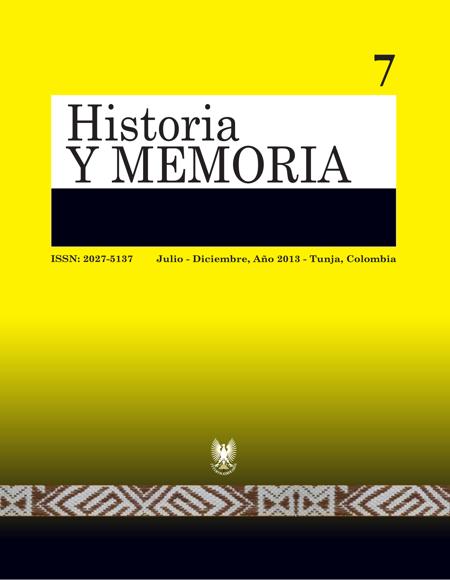Visual transactions and reinscriptions of identity in Nadín Ospina and Calimocho Styles

Abstract
Relecting on identities in Latin America in the space of visual arts leads to an analytical revision not only of alternative versions of the cultural past, but also of the way in which transnationality has affected contemporary practices, especially through extended periods of exile, diaspora, migrations and displacements. One possible conceptual weapon would be the use of irony or parody. In this aspect, the Colombian artist Nadín Ospina synthesizes possible exchanges between symbolic productions of the Pre-Hispanic period, current fetishized merchandise, and certain imaginaries linked to the media. Projected from the place of sarcasm, Ospina materializes these fetish objects that allude to the exotic nickna megiven by Europe to American visuality andresets cultural difference to the extreme of potentializingit and putting it in lux. On the other hand, Calimocho Styles, the duo between the Mexicanartists Ruben Ortiz Torres and Eduardo Abaroa examines unstable and changing cultural identities that emerge from the continuous border crossing between Mexico and United States, inquiring into ambivalent strategies of generating cultural products and proposing contemporary ictions from iconic referents of mass consumption. In both cases, hybrid visual proposals are generated, which create a space for numerous inquiries and discussions on interculturality and its incidence in Latin America.Keywords
visual transactions, identity, postcoloniality, Latin American art, frontier, interculturality
Author Biography
María Elena Lucero
Doctora en Humanidades y Artes-Mención Bellas Artes, Universidad Nacional de Rosario. Docente investigadora y Directora del Centro de Investigaciones y Estudios en Teoría Poscolonial, Universidad Nacional de Rosario. Delegada argentina de la Red de Estudios Visuales
Latinoamericanos. elenaluce@hotmail.com.
References
- AAVV. Axis México - Common Objects and Cosmopolitan Actions. California: San Diego Museum of Art, 2002.
- Anzaldúa, Gloria. Borderlands/La Frontera. The New Mestiza. San Francisco: Aunt Lute Books, 1987.
- Ardila, María Elvira. “¡Juega bien!”, en MUNDO, Nadín Ospina, Elogio a la ironía. Revista 18, Junio 2005. Bogotá: Proyecto Artística Mundo, 2005, 85.
- Bhabha, Homi. El lugar de la cultura. Buenos Aires: Manantial, 2007.
- Bhabha, Homi. “Introducción: Narrar la Nación”, en Bhabha, Homi (compilador). Nación y Narración. Entre la ilusión de una identidad y las diferencias culturales. Buenos Aires: Siglo Veintiuno editores, 2010, 11-19.
- Debroise, Olivier (editor). La era de la discrepancia - arte y cultura visual en México 1968-1997. Catálogo de Exhibición. México DF. MUCA, Instituto de Investigaciones Estéticas, UNAM/ Buenos Aires: MALBA, 2007.
- Dorfman, Ariel y Armand Mattelart. Para leer al Pato Donald. Comunicación de masas y colonialismo. Buenos Aires: Siglo Veintiuno editores, 2002.
- Grimson, Alejandro. Interculturalidad y comunicación. Buenos Aires: Grupo Editorial Norma, 2000.
- Hall, Stuart. “1. Introducción: ¿Quién necesita identidad?”, en Hall, Stuart y Paul du Gay (comp). Cuestiones de identidad cultural. Buenos Aires: Amorrortu editores, 2003, 13-39.
- Hall, Stuart y Miguel Mellino. La cultura y el poder. Conversaciones sobre los cultural studies. Buenos Aires: Amorrortu editores, 2011.
- Herzog, Hans Michael. “El pasado precolombino es inasible. Fragmento de una extensa entrevista”, en MUNDO, Nadín Ospina, Elogio a la ironía. Revista 18, Junio 2005. Bogotá: Proyecto Artística Mundo, 2005, 17-18.
- Medina, Álvaro. Nadín Ospina. Reiguraciones. Santafé de Bogotá, Colombia: Pretextos Grupo Editorial, 2000.
- Mignolo, Walter. Desobediencia epistémica. Retórica de la modernidad, lógica de la colonialidad y gramática de la descolonialidad. Buenos Aires: El Signo, 2010.
- Modonessi, Massimo. Subalternidad, antagonismo, autonomía. Marxismo y subjetivación política. Buenos Aires: CLACSO, 2010.
- Mosquera, Gerardo (comp). Adiós Identidad. Arte desde América Latina. Foros Latinoamericanos I y II. Museo Extremeño e Iberoamericano de Arte Contemporáneo,
- Badajoz. Madrid: Editorial Lápiz, 1999.
- Mosquera, Gerardo. “Notas sobre globalización, arte y diferencia cultural”, en AAVV. Zonas Silenciosas. Sobre globalización e interacción cultural. Amsterdam: Editor Rijkasakademie van beeldende Kunsten, Amsterdam. Rain Artist´ Initiatives Network, 2001, 39-49.
- Olea, Héctor, Mari Carmen Ramírez y Tomás Ybarra Frausto. Resisting categories: Latin American and/or Latino? The Museum of Fine Arts, Houston, International Center for the Arts of the Americas. New Haven and London: Yale University Press, 2012.
- Restrepo, Eduardo. “Cuerpos racializados”, en Revista Javeriana: El Pensamiento cristiano en diálogo con el mundo. Medio ambiente universal y desarrollo sostenible, Colombia: Editorial Pontificia Universidad Javeriana, 2010, 16-23.
- Sommer, Doris. “Un romance irresistible. Las ficciones fundacionales de América Latina”, en Bhabha, Homi (compilador). Nación y Narración. Entre la ilusión de una identidad y las diferencias culturales. Buenos Aires: Siglo Veintiuno editores, 2010, 99-134.
- Zamudio Taylor, Víctor. “Ultrabaroque: Arte, mestizaje, globalización”, en Amstrong, Elizabeth y Víctor Zamudio Taylor.Ultrabaroque. Aspects of Post Latin American Art.
- USA: Museum of Contemporary Art, San Diego, 2000, 143- 144.
Downloads
Download data is not yet available.
